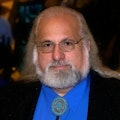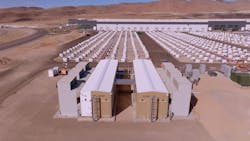Redwood and Crusoe Power AI with Circular Energy: Repurposed EV Batteries Drive Sustainable Infrastructure
Crusoe Energy and Redwood Materials have commissioned what is now the largest solar and second-life battery microgrid in North America. Located at Redwood’s 100-acre campus in Sparks, Nevada, the new system combines 12 megawatts (MW) of solar generation with 63 megawatt-hours (MWh) of energy storage, powered entirely by repurposed electric vehicle (EV) batteries.
The project also marks a global milestone: the largest known deployment of second-life EV batteries to date.
The growing need for flexible, sustainable grid infrastructure is driving innovation in how energy storage is sourced and deployed. Reusing EV batteries, many of which still retain 70% to 80% of their original capacity after retirement from vehicle use, presents a promising path forward for stationary applications. These second-life systems address not only the demands of energy transition but also the mounting challenge of lithium-ion battery waste.
Through its newly launched division, Redwood Energy, Redwood Materials is scaling this approach. The company currently recycles and processes roughly 90% of all lithium-ion batteries in North America, handling close to 20 gigawatt-hours (GWh) annually. That feedstock puts Redwood in a strong position to build second-life systems at meaningful scale.
While technical standards and regulatory frameworks still need to catch up, the alignment of cost declines, accelerating EV adoption, and escalating grid storage needs is forming a clear trajectory. With smart investment and policy, second-life battery microgrids could become a foundational piece of resilient, circular energy infrastructure.
According to research firm IDTechEx there will be over 6 million retired battery packs in play by 2030, representing over 275 GWh of new second-life capability becoming available annually. JB Straubel, founder and CEO of Redwood Materials, described the benefits of the technology:
Redwood Energy’s technology allows us to repurpose depreciated but functional EV battery packs, before recycling, into stationary storage. By putting these systems to work in high-demand applications like AI, we’re building energy infrastructure that’s faster, cleaner and at lower cost.
Crusoe Spark: Modular AI Data Centers Meet Off-Grid Power
Alongside the unveiling of the Redwood microgrid, Crusoe introduced Crusoe Spark, a self-contained, modular data center platform designed to bring high-performance AI compute to the edge, without the need for traditional utility power.
Each Crusoe Spark unit integrates power distribution, advanced cooling, GPU-optimized server racks, and system monitoring into a portable chassis. Built for rapid deployment and scalable clustering, the system is engineered to operate in remote or constrained environments where grid access may be delayed or unavailable.
Straubel noted that these modular data centers pair naturally with Redwood’s second-life battery microgrids, creating a highly flexible infrastructure solution. Together, the technologies make it possible to deploy AI-ready compute wherever it’s needed, without waiting for utility interconnection or relying on diesel generators.
Redwood’s Sparks campus now effectively serves as a live demonstration. The site’s 12 MW, 63 MWh microgrid is powered by a 20-acre solar array and second-life batteries, delivering uninterrupted AI compute after sunset and entirely independent of the local grid. The result is a blueprint for off-grid, sustainable data infrastructure that can be replicated wherever energy and compute need to move in lockstep.
This approach offers a compelling option for high-intensity workloads at the edge, bringing new speed, resilience, and sustainability to the deployment of AI infrastructure. Chase Lochmiller, CEO and Co-Founder of Crusoe described the importance of the development of these microgrid powered modular data centers, saying:
One of the greatest challenges of our time is rapidly scaling the energy needed to support AI. By leveraging Redwood's revolutionary recycled battery systems with a solar array to power Crusoe Spark units, we've demonstrated how you can quickly deploy the energy and data center needs required to meet the demand of AI in a cost-effective and sustainably powered way.
Crusoe and Redwood’s collaboration presents a compelling model for off-grid, sustainable AI infrastructure. By integrating solar power, second-life EV battery storage, and modular AI data centers, the partnership demonstrates how high-performance computing can be deployed quickly, sustainably, and cost-effectively, anywhere it’s needed.
The Second-Life Battery Business
Looking to build grid power using second-life batteries is not a new concept.
As far back as 2012 GM, along with Duke Energy and ABB were looking at ways to utilize these batteries, and other auto manufacturers were also considering ways to capitalize on the second life battery business.
It’s also true that while these projects were started more than a decade ago, we’ve seen little, if any, impact on the current energy storage issues affecting the industry.
A number of third-party companies have been launched to develop second-life battery applications and deployments, including:
- Has commissioned the world’s largest second-life BESS—a 53 MWh grid-connected facility in West Texas using ~900 repurposed EV batteries
- Currently has nearly 2 GWh of second-life batteries in pipeline and partners with LG Energy Solution Vertech for turnkey deployments
- Focuses on reusing EV batteries in modular, low-cost systems (~1.2 MWh per 20′ container).
- Utilizes AI-driven diagnostics and BMS, with pilot site in Davis, CA, since 2019 and UL certification in progress.
- North America’s leading EV battery repurposer with Series A funding (~$15 million).
- Builds BESS from 400 kWh–10 MWh for commercial, industrial, utility, and EV charging applications with clients that include Mercedes-Benz Energy, utilities, microgrids.
- UK-based, repurposes EV batteries into portable “Powerskids” (≈130 kWh) for festivals, construction sites, fleet depots, and off-grid use.
- Swedish company repurposing batteries from heavy-duty EV trucks into stationary BESS at charging depots (e.g., Rosersberg Smartcharger Station).
- Currently operates a large-scale second-life BESS in Lancaster, California, using >1,300 Nissan Leaf battery packs to smooth solar output.
The Future is Promising for Second-Life
As electric vehicle adoption accelerates globally, millions of EV batteries will reach the end of their automotive lifecycle in the coming decades. Repurposing them for stationary energy storage systems offers a sustainable, cost-effective solution to support grid resilience, renewable integration, and peak load management.
About the Author


